Introduction/Abstract
I recently was able to visit what I think is the best zoo in the United States of America, the San Diego Zoo. From the high standards of care to the conservation work being done by the organization as a whole, the San Diego Zoo sets a high standard in the field of conservation. One of my most outlandish dreams is to create an animal sanctuary or zoo to create my own programs and the San Diego Zoo sets a very high bar for me to reference. There is plenty to talk about the San Diego Zoo but today I want to talk about one specific topic I’m extremely passionate about: insects!
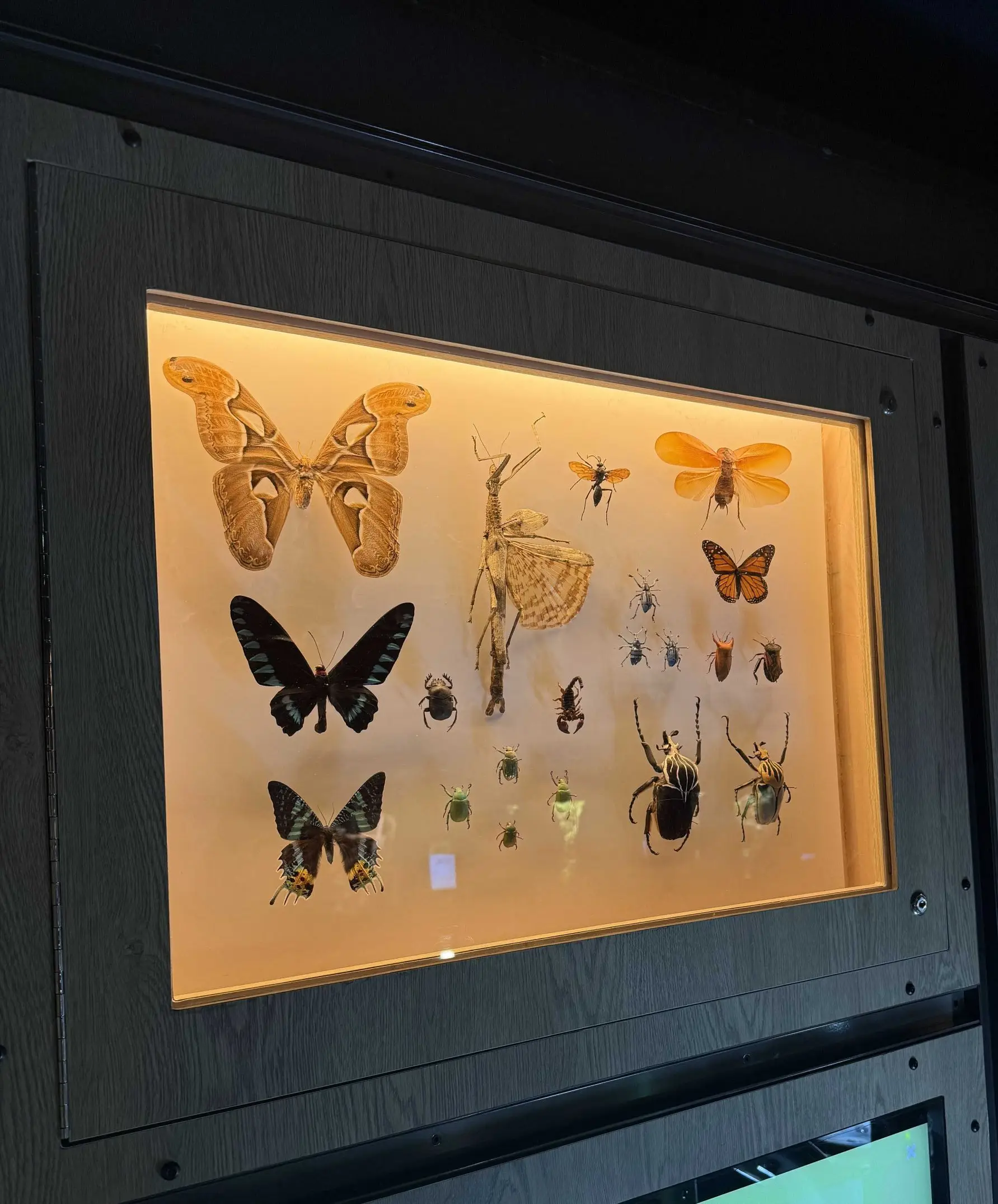
Why are Insects so Important?
I currently work as an afterschool enrichment teacher and I use every opportunity to share just why insects are so important to the world. Despite being such a foundation in ecosystems all over the world, insects don’t get enough credit. Many of the animals like birds, bats, fish, and so many more that we all know and love would never survive without bugs. Actually, we wouldn’t survive past a couple of days without bugs!
One of the most important roles that insects have in our world is pollination. According the the Nature Conservancy, insects generate $57 billion dollars in economic value every single year. Let me clarify that even further and state that the $57 billion dollars is looking at only the United States. So many fruits and plants rely on insects, some plants relying only on one species of insect. It’s incredible just how much work goes completely unnoticed by insects every single day. Fun, approachable education like the ones in the San Diego Zoo creates a foundation for insect conservation.
Sweet Drops and Fungus Farms: Honeypot and Leaf-Cutter Ants
As a relatively new ant-keeper, I am always thrilled to see unique ways of taking a closer look at different types of colonies. The San Diego Zoo had two ant colonies: Honeypot Ants and Leaf-Cutter ants, both shown in different but incredible ways. We’ll talk about both and I’ll talk about how both give an incredible view inside ant colonies.
If you didn’t know, Honeypot Ants have special ants that are able to fill up expand to be reserves of food. These ants are usually found in areas where food can be pretty scarce. This adaptation allows the colony to survive in periods without any new food. Leaf-Cutter Ants are completely different. They don’t look or wait for food to wander by! They go around finding, cutting, and collecting pieces of leaves to feed their own special fungus making them one of the very first farmers!
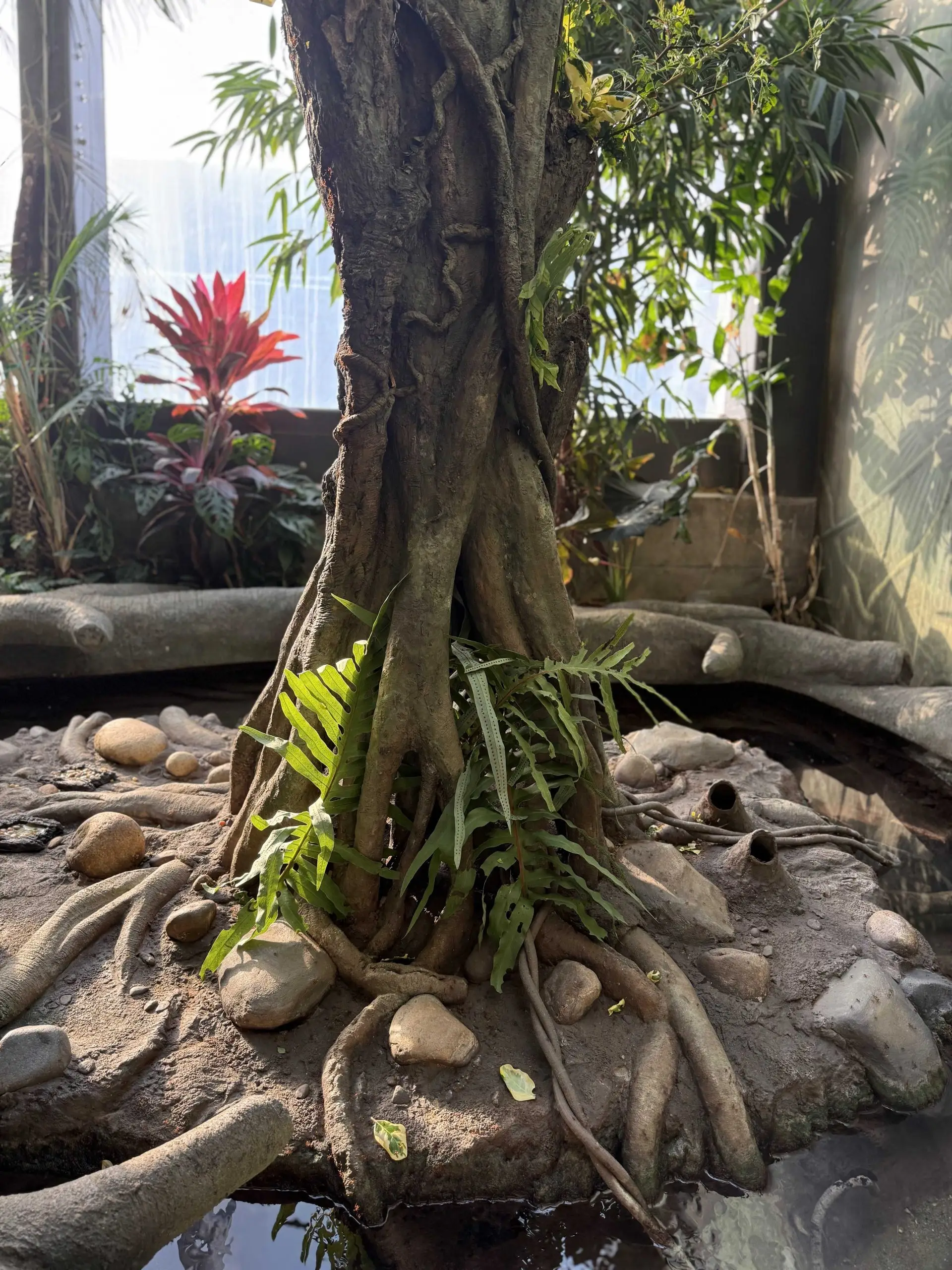
Inside the insect building, the Spineless Marvels, I found a tree and with a closer look, I was able to see tiny reddish ants all over the base. It might be hard to see but there are tiny dots in the picture above. These are all ants! You can even see some of them gathered near a nest entrance with a couple of leaf clippings. It was amazing watching hundreds of workers collectively working on breaking down leaves.
One of the most impressive parts of this display was the fact that these ants were out in the open! Because of the water moat around the tree, the zoo didn’t need to put glass or acrylic between the ants and visitors. There are some ants where a moat of water won’t stop them from exploring but when my colony of Carpenter Ants grows to a big enough size, I would love to design an open air system like this. However, the magic begins when you step inside the building!
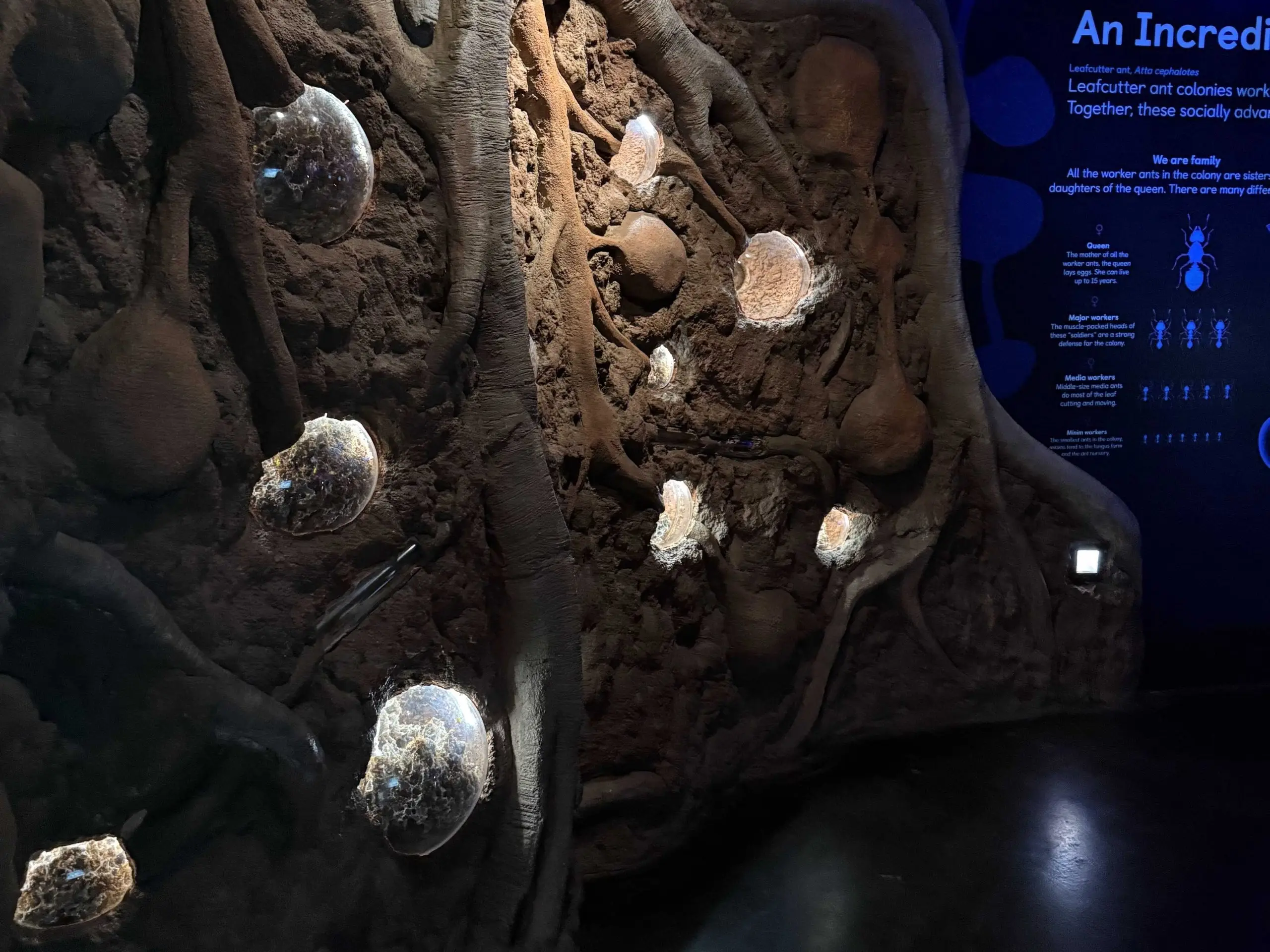
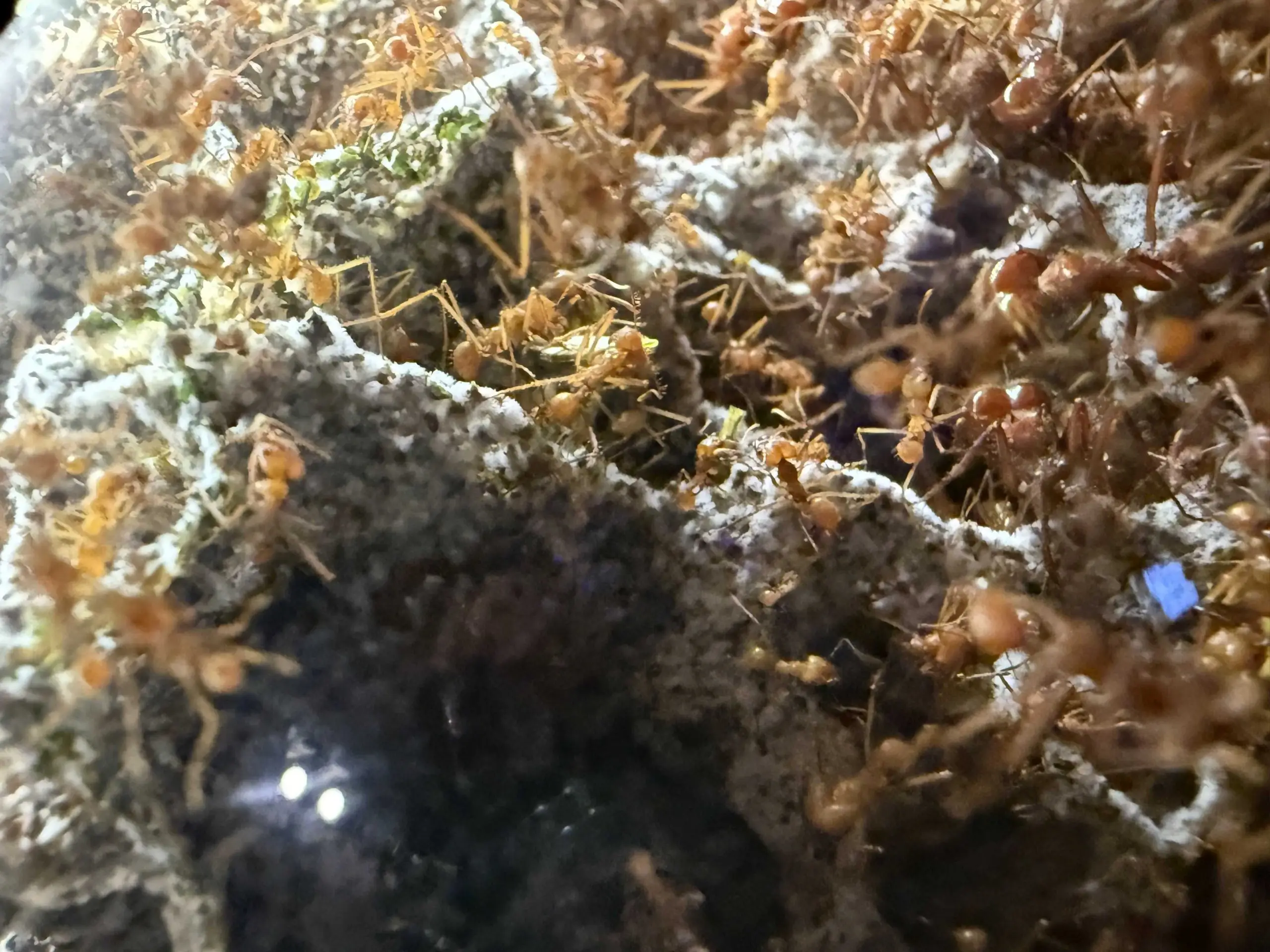
After going through another door, I entered the world of ants. On the wall as you enter was this set up where you could see the inside of the leaf cutter ant colony. You can see that some of these viewing ports were completely full, some were almost and some where pretty much empty! With a closer look, you were ale to see where the ants would put the leaves to get the fungus to grow. The ants formed tunnels for eggs and larvae to develop. Having a leaf cutter colony is on my list of ambassadors to have and having a camera to view the progress of these fungal farms would be absolutely wonderful to see.
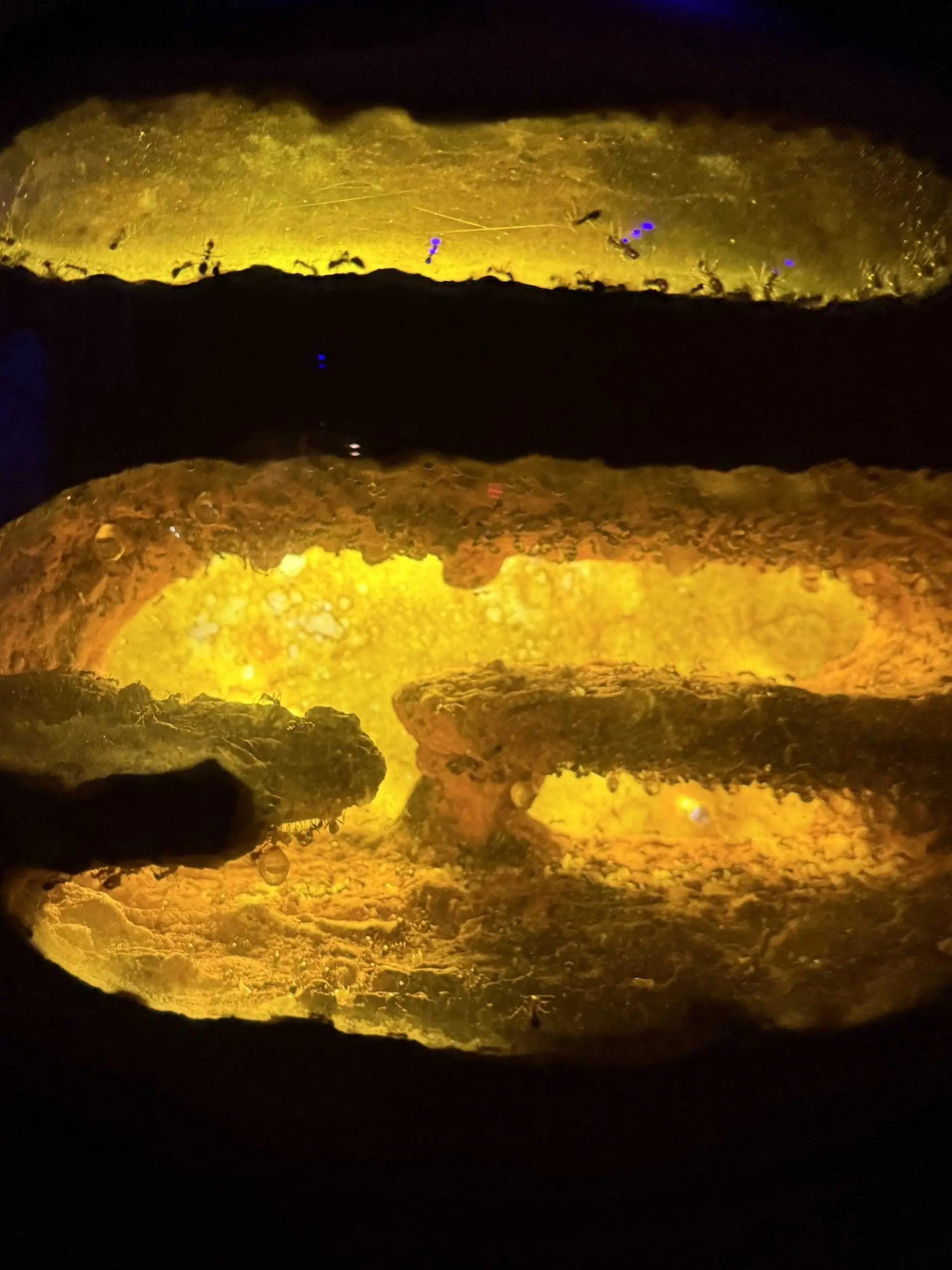
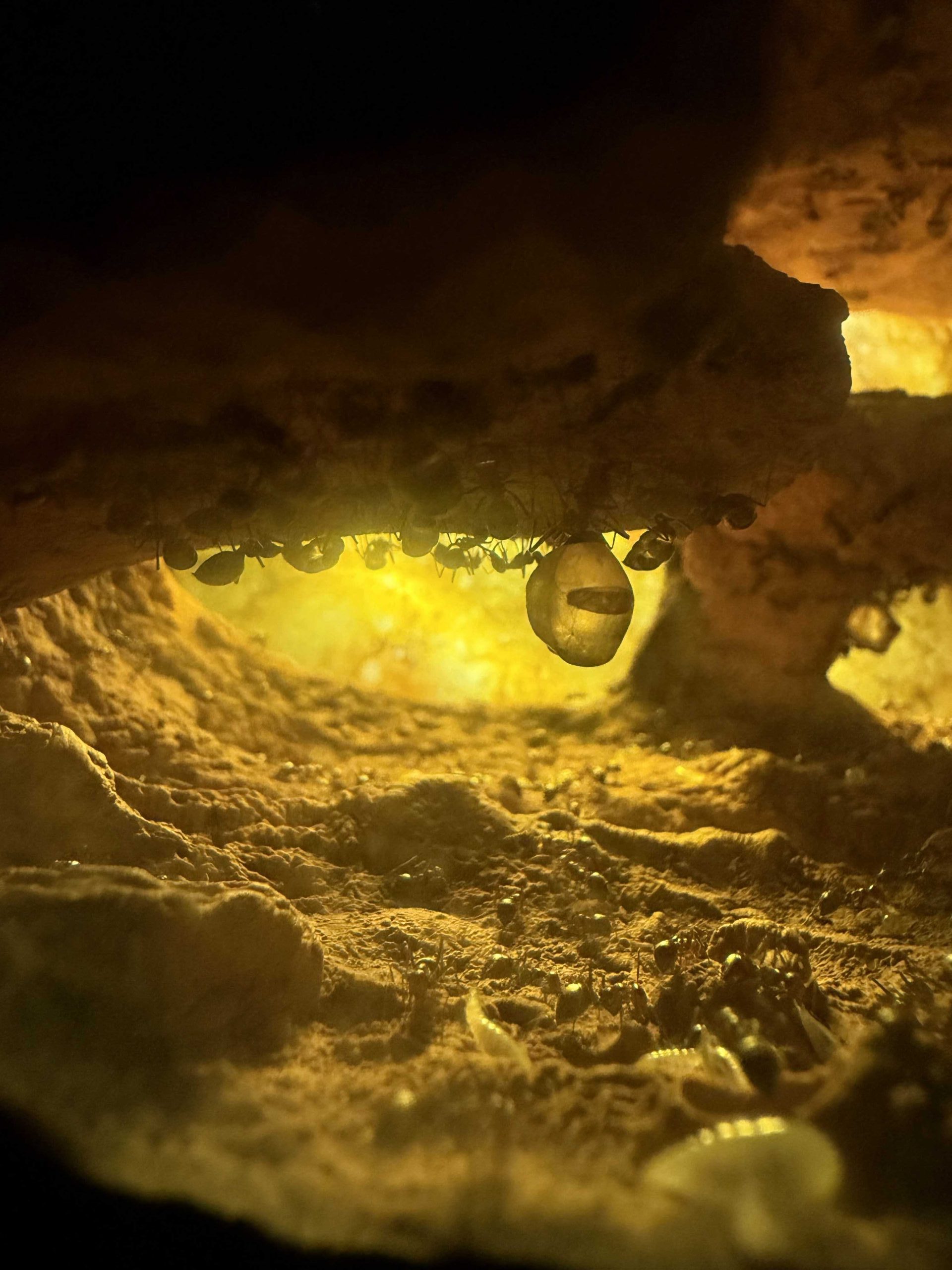
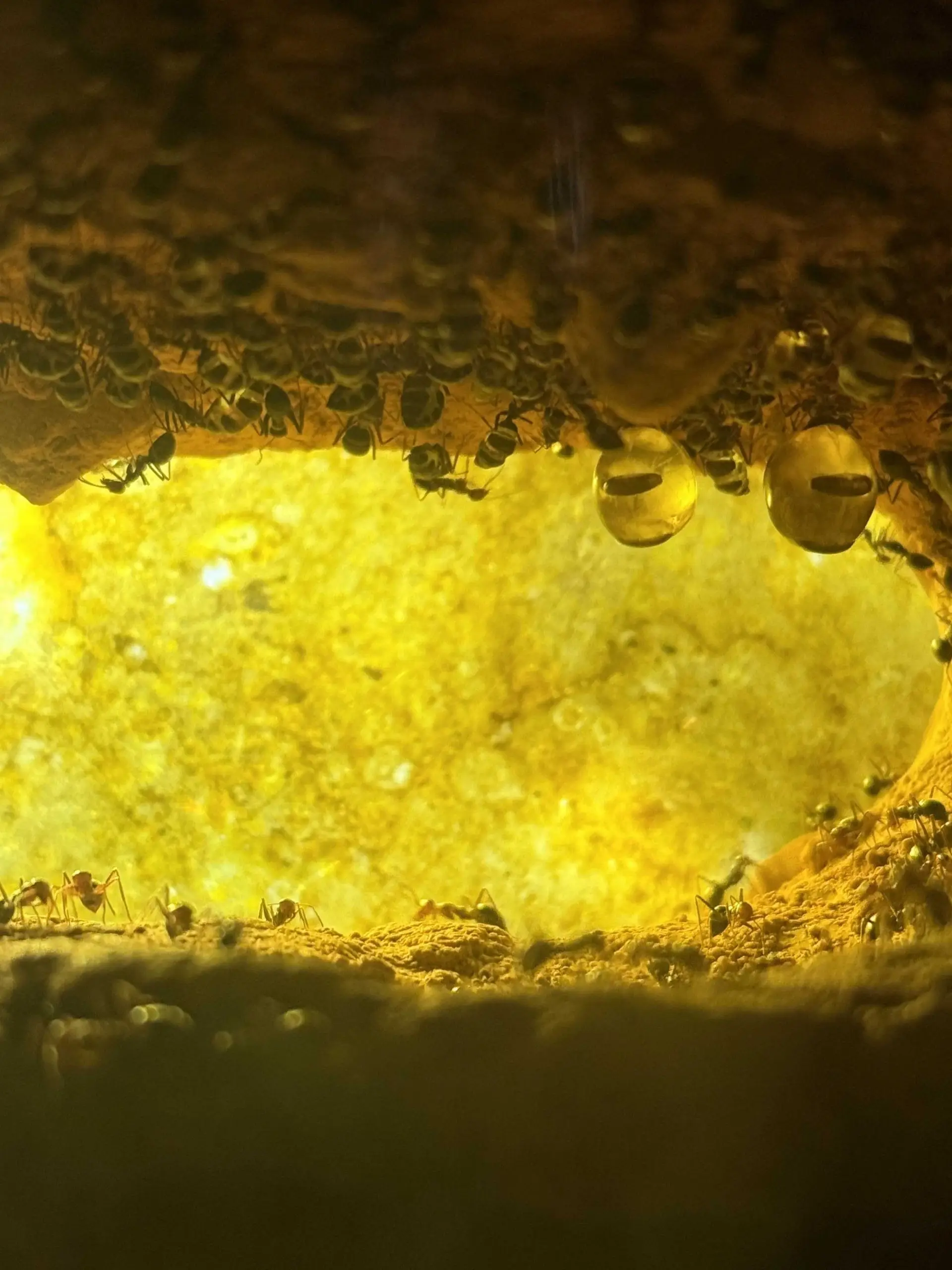
The other ant colony that the San Diego Zoo was a little smaller but still wonderful to see: Honeypot Ants! Now this species gathers food and stores food in specialized ants called a replete! These ants will hang from the ceiling for their entire lives and serves as a safe way to store food. You can see in the middle picture. Maybe this is my fascination with ants speaking, but I would love to get a camera in this nest. I think a time lapse of ants slowly filling up a replete would be fascinating to see!
Displays and Educational Aids
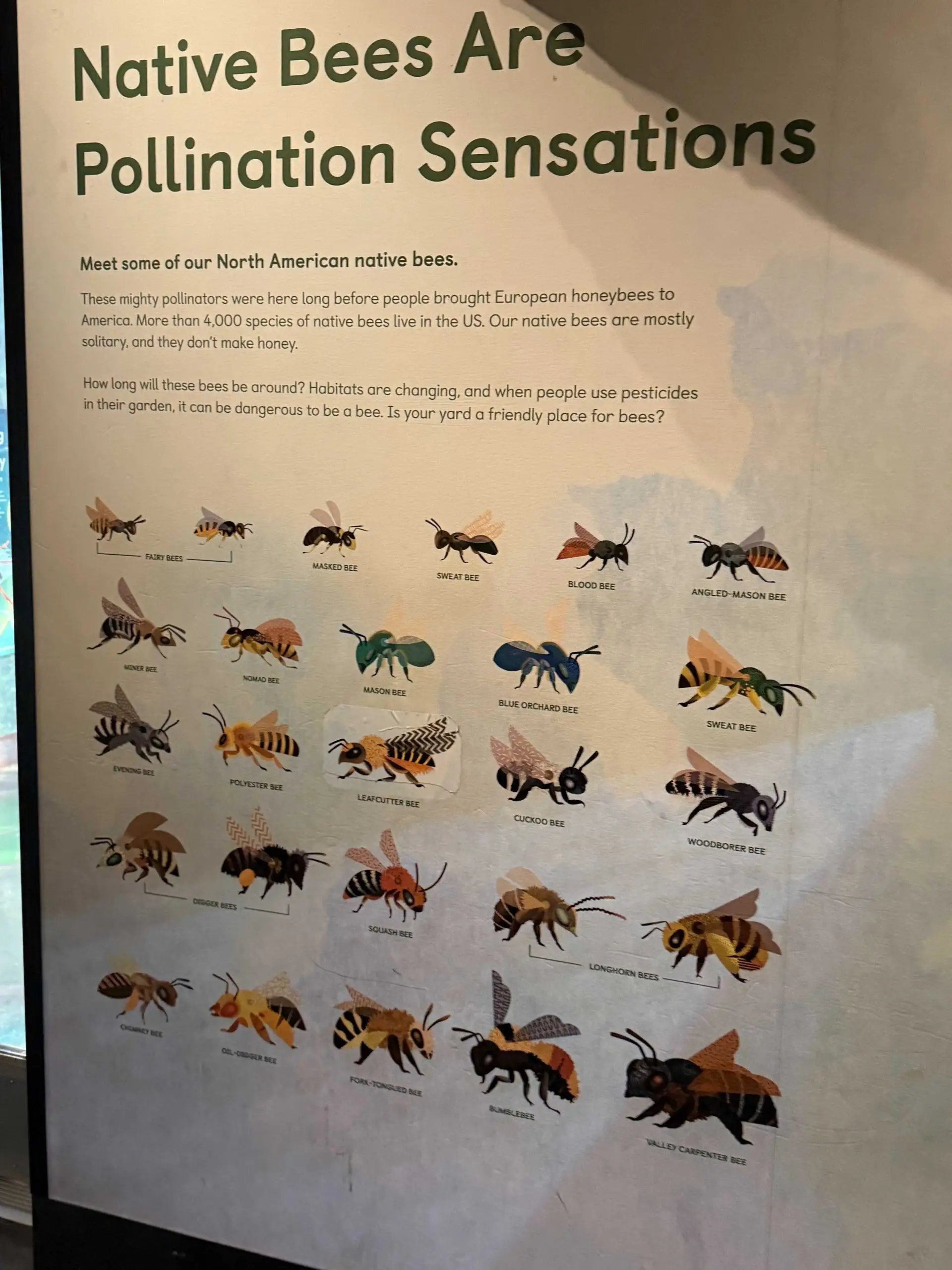
I wanted to highlight some of the educational aids I saw focused around insects. Especially since insects are viewed in such a poor light, some of these aids really expanded what information is out there. This display really made the most of its space. Bringing up the idea of native species is something that isn’t talked about nearly enough. Highlighting and introducing this idea while also showing how different some of these insects can be is something that I want to keep in mind if I’m ever fortunate to design an area or program in the future.
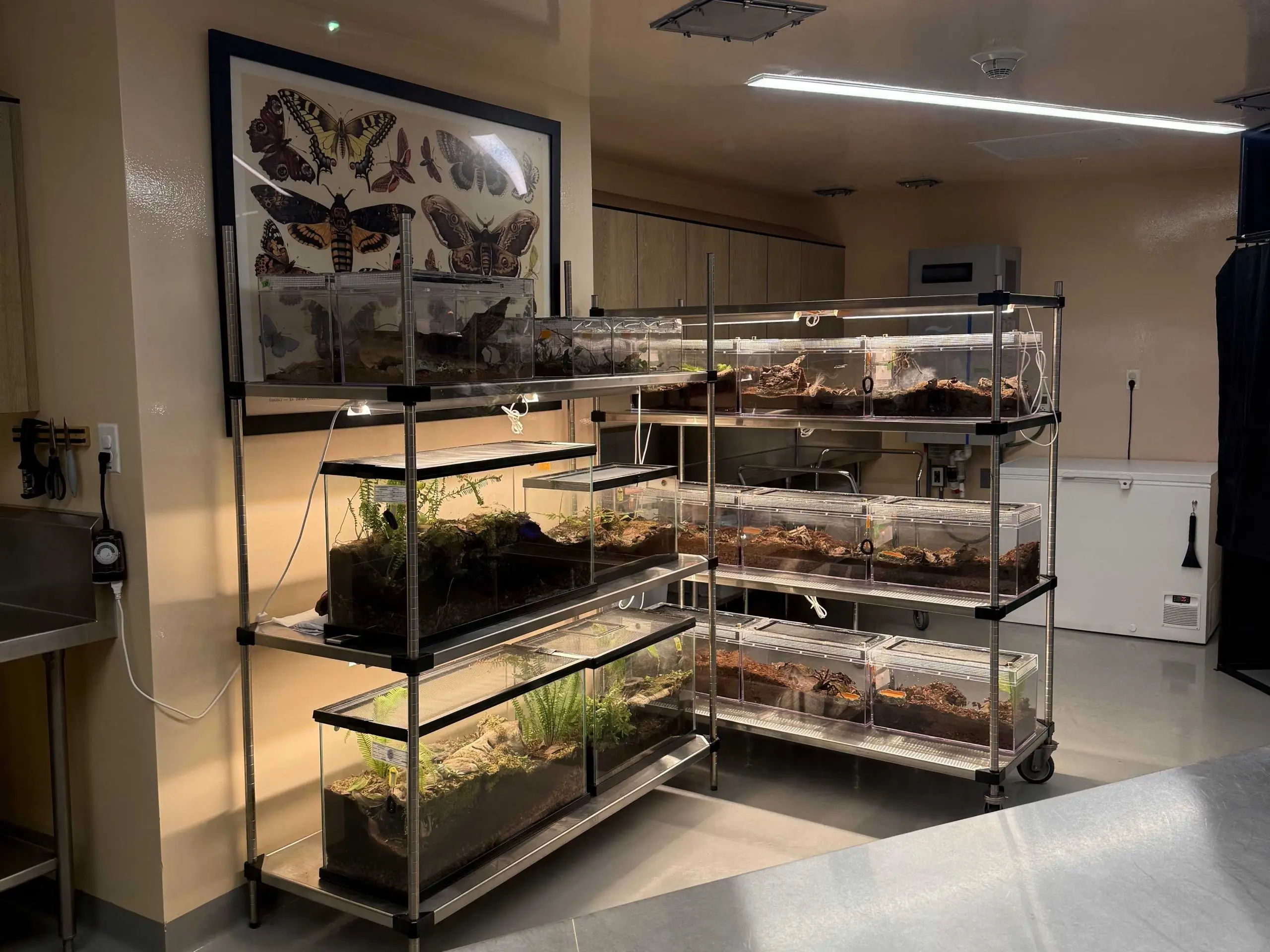
Although this part of the room was inaccessible to the public, there was work being done with live insects and displays. I love the idea of including something like this work room! Giving people, especially younger students, an idea of what kind of work and careers there are in conservation is such an important concept. I had a very limited idea of what kind of jobs were available in conservation. I lumped all zookeepers under one title. Letting people see exactly work looks like is another concept I will hold onto.
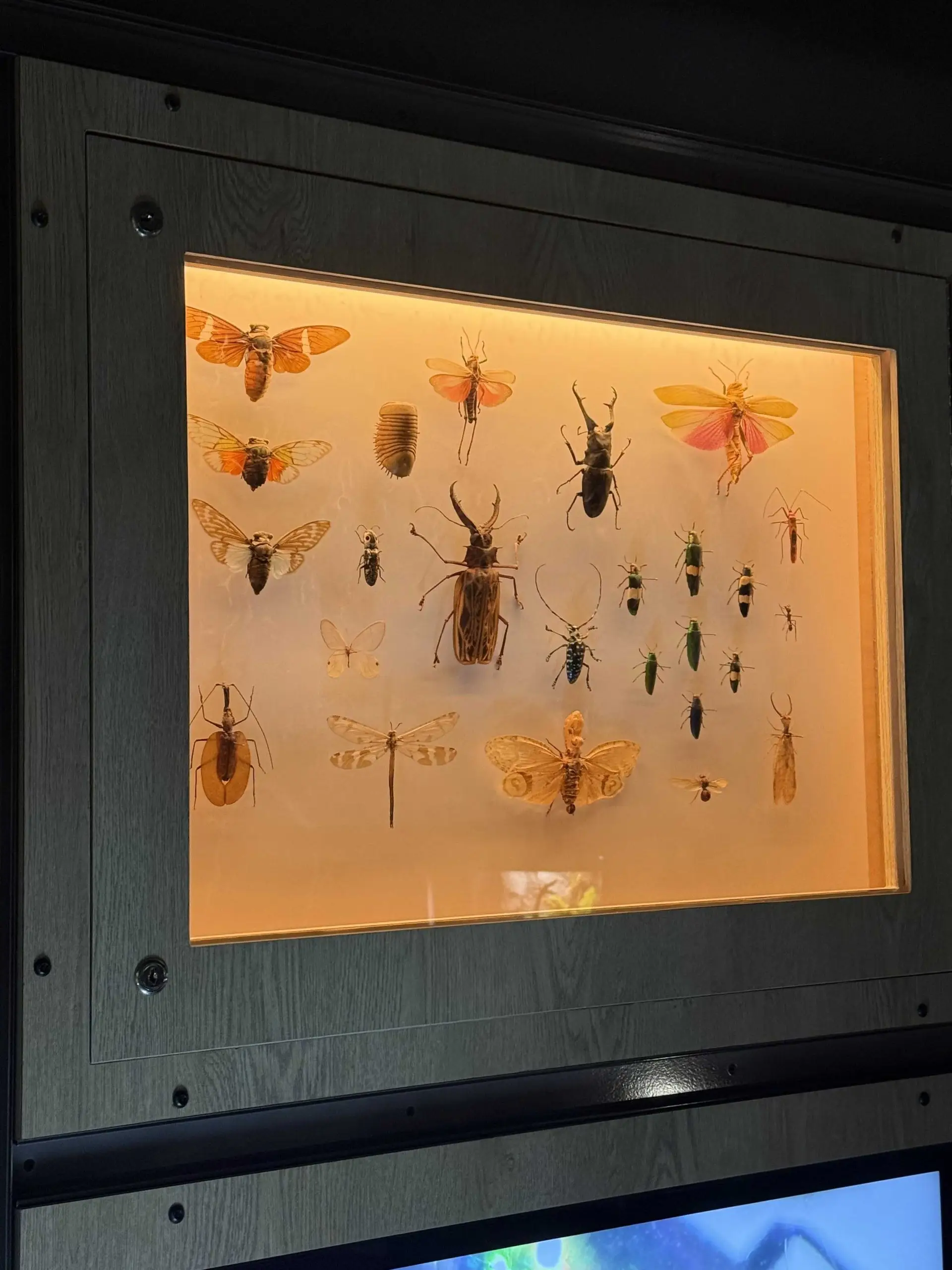

One of the last displays that caught my eye were the preserved insects! I wish there were a lot more of these since I think they let people get a closer look at some of these insects without them moving too much. I think up close, it’s easier to see just how beautiful and complex some of these creatures are. Many of these insects have such unique adaptations.
Since I’ve been mentioning my plans (however unrealistic they might be) for an animal sanctuary or zoo, I would love to create events around these displays. Letting people create their own displays gives them such interactive experience. It also lets them experience what being an biologist might feel like! Another great benefit would be taking some of these displays made by guests and making it a permanent display at the facility. Part of the struggle with conservation is getting people involved and invested. I know that if I had a display at a zoo, I would be much more invested in bringing friends and family to share my work.
Conclusion
There is so much at the San Diego Zoo to explore. I hadn’t been there in such a long time and forgot how absolutely wonderful it is to experience. I was able to explore quite a bit more than just the insects shown here and I plan on going again very soon. Going to different zoos and seeing what they are doing right and what can be improved is vital in the field of conservation.
In order for things to move forward, it’s important that we don’t gatekeep conservation. That was one of the reasons why I created WILD Education. I didn’t want to only teach about animals. I want to teach people how to teach about animals. Hopefully by sharing my experiences and idea, I’m able to inspire others to do the same.


